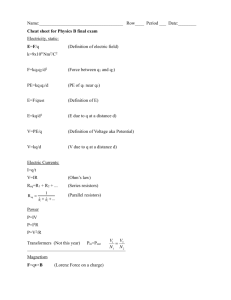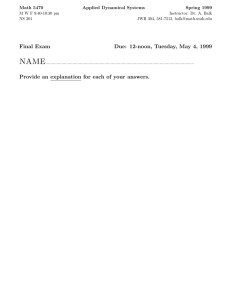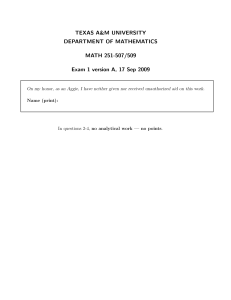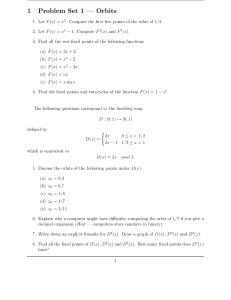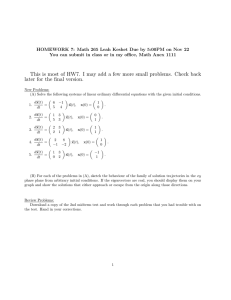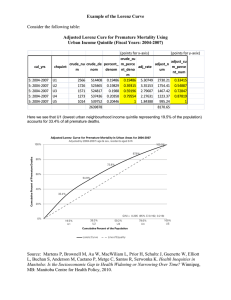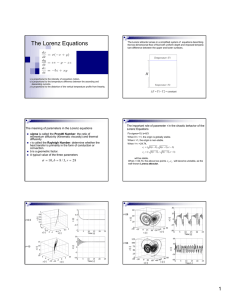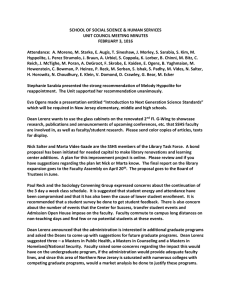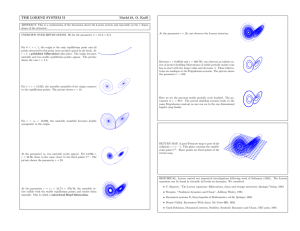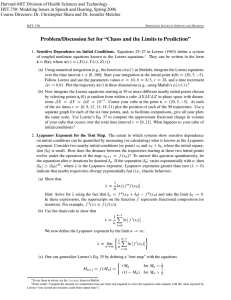NAME
advertisement
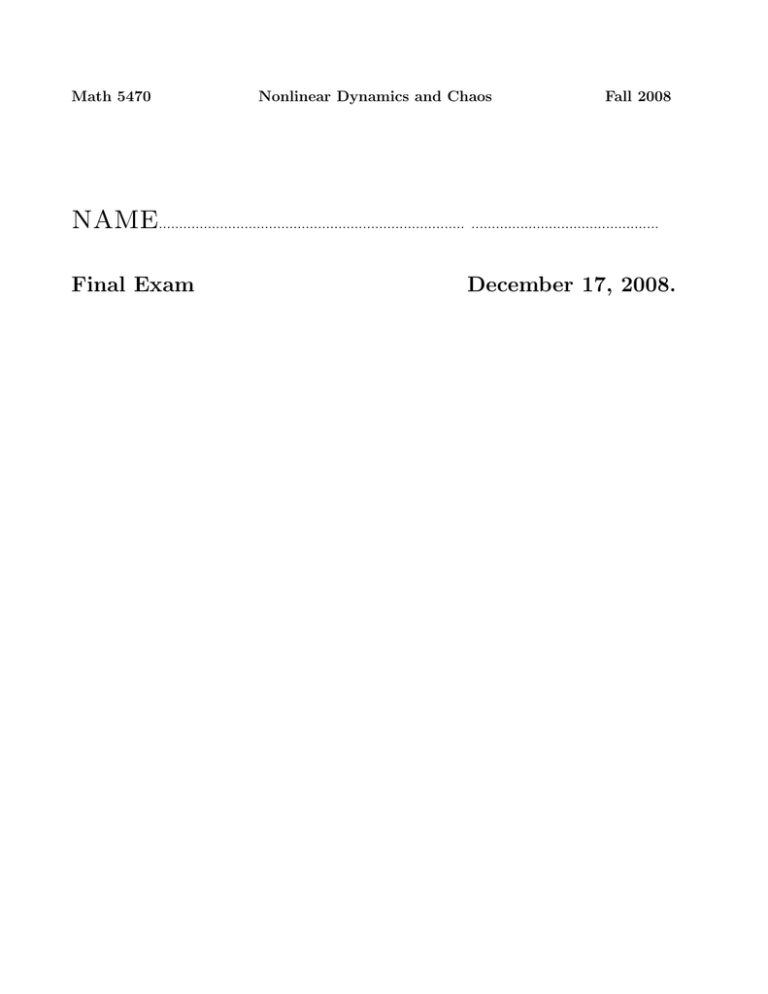
Math 5470 Nonlinear Dynamics and Chaos Fall 2008 NAME........................................................................... .............................................. Final Exam December 17, 2008. 1. Consider the system ẋ = 1 + rx + x2 (x(t) is a scalar function, r is a real parameter). (a) sketch all the qualitatively different vector fields that occur as r is varied. (b) Sketch the bifurcation diagram of fixed point x? versus r. 2. Consider the system ẋ = ax, ẏ = by (x(t) and y(t) are scalar functions, a and b are real parameters). Find the condition on a and b that all trajectories become parallel to the y-direction as t → −∞, and parallel to the x-direction as t → +∞. 3. Can a fixed point be stable but not attracting? Can a fixed point be attracting but not stable? Give examples and explain. 4. Give an example of a system which simultaneously possesses the following two properties (1) it is dissipative, i.e. any volume in phase space contracts under the flow, (2) “almost” all trajectories go to infinity as time t → ∞. (Hint: Consider a linear 2-D system given in Problem 2.) 5. (a) What does it mean that the Lorenz system exhibits sensitive dependence on initial conditions? (b) What is the Lorenz map? How did Lorenz decide that the attractor in his system is not just a “very long” stable periodic orbit? 6. Consider the system ẋ = y(1 − x), ẏ = x(1 − y). Does it have a periodic orbit? Explain.
